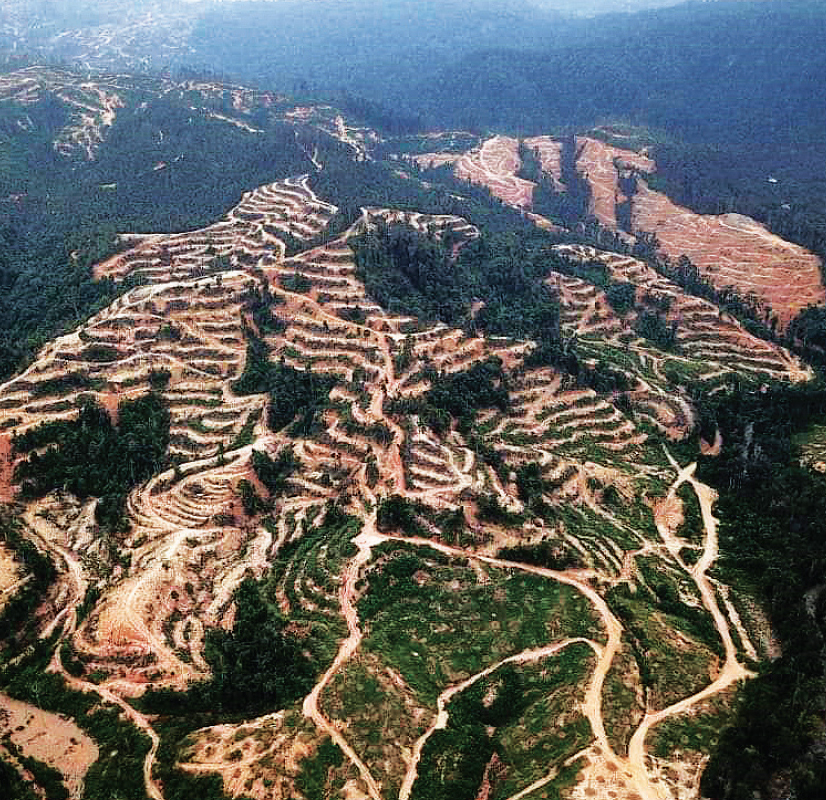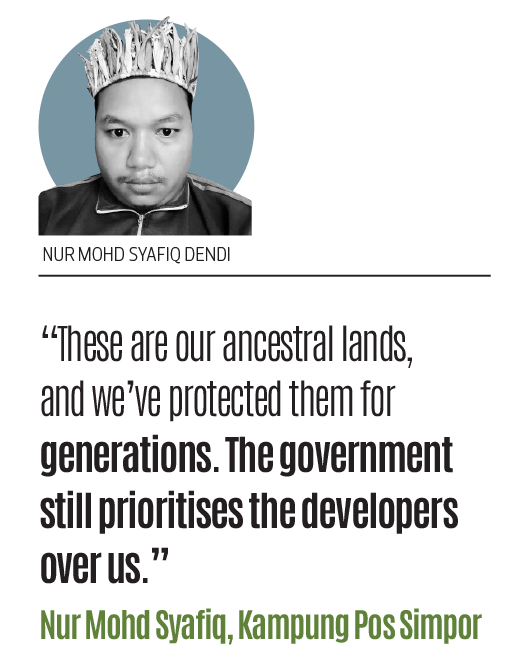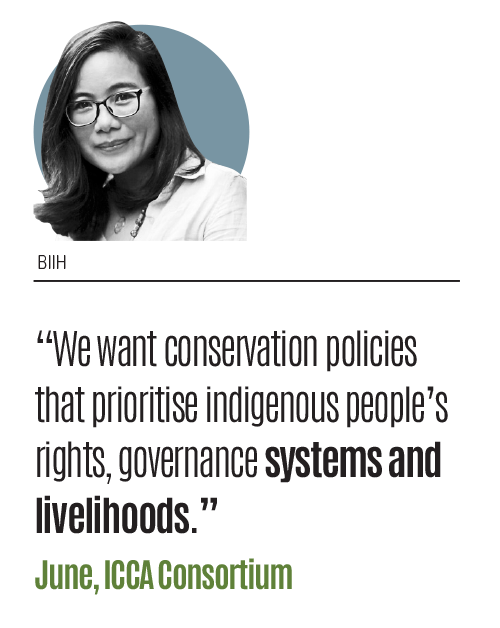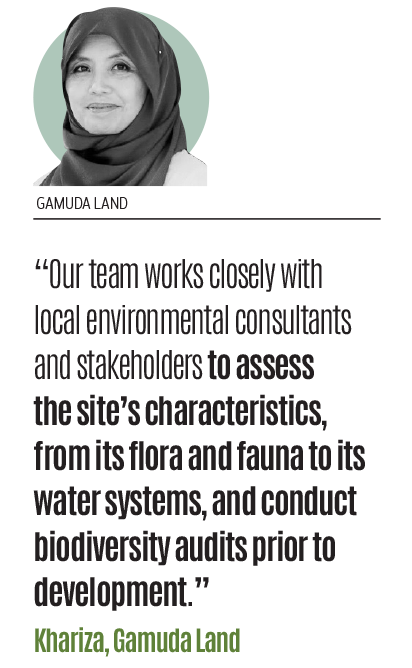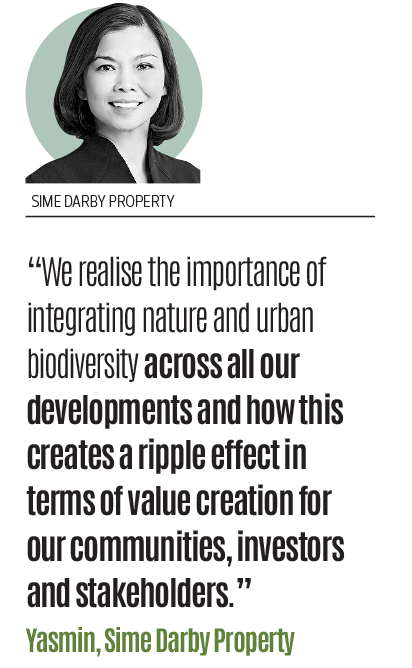This article first appeared in The Edge Malaysia Weekly on December 30, 2024 - January 12, 2025
Malaysia’s transition to becoming a developed and high-income nation has imposed pressure on its biodiversity.
Thankfully, the country has been ramping up its efforts in conservation and the sustainable management of its biodiversity. For instance, it aims for biodiversity conservation to be effectively mainstreamed into development frameworks, threatened natural ecosystems to be sustainably managed and degraded ecosystems restored by 2030, according to the National Policy on Biological Diversity 2022-2030.
Malaysia is one of the first parties to integrate the Kunming-Montreal Global Biodiversity Framework into its National Biodiversity Strategies and Action Plans.
The country is on the right track with these initiatives being put in place but much more needs to be done, say experts. This is because areas with high biodiversity that contain threatened species are under constant threat of being lost or degraded. Species such as the Sumatran rhinoceros are now extinct in Malaysia, while less than 150 Malayan tigers remain in the wild.
Moreover, development projects are fragmenting natural habitats, which lead to biodiversity loss. More than three million hectares of Malaysia’s forests are under threat, according to the State of the Malaysian Rainforest 2024 report by environmental watch group RimbaWatch, which claims that timber plantations are the top threat to natural forests.
Wildlife conflicts are also on the rise. There have been 80,375 human-wildlife conflict incidents reported in the country since 2018, according to Minister of Natural Resources and Environmental Sustainability Nik Nazmi Nik Ahmad.
ESG speaks to experts to get their views on how the country can put its best foot forward in the coming year.
Prioritising indigenous peoples and local communities
Developers are bulldozing through forests without respecting the traditions of the indigenous peoples who live there, claims Nur Mohd Syafiq Dendi from Kampung Pos Simpor in Gua Musang, Kelantan, whose village is being threatened by commercial development.
“These are our ancestral lands, and we’ve protected them for generations. The government still prioritises the developers over us,” he laments.
Peaceful coexistence between human and wildlife has deteriorated significantly over the past few decades due to these deforestation activities, says Nur Mohd Syafiq. Deforestation is also impacting the villages’ access to clean water, and leaves them at risk of flooding.
Rapid developments in the area such as logging have already removed local flora, from large trees to small vegetation, which leaves no sanctuary or food for wildlife. The Nenggiri hydroelectric dam nearby has also displaced communities and submerged 5,834ha of forest, he says.
The diminishing forest has pushed wild animals to venture into the villages and destroy the villagers’ crops, which threatens food security for the local communities. Worryingly, there has also been encroachment by tigers that have led to fatal attacks.
“As forests are lost and become more fragmented, there is less habitat for wildlife to roam in. Hence, wildlife might be pushed out of their original habitat in search of food or other resources. We have also seen an increase of human-tiger conflict cases, where tigers either prey on livestock or have even killed humans,” says Dr Mark Rayan Darmaraj, country director of the Wildlife Conservation Society Malaysia Programme.
Nur Mohd Syafiq hopes laws that protect forests and wildlife are strengthened to ensure that development projects respect indigenous land rights.
“We demand that the government recognise the rights of indigenous peoples. This is so the forests can be preserved, be passed down and be taken care of for future generations,” he says.
A change in the way things are done
To address these issues, policies must evaluate the consequences of developments and how they align with long-term ecological and social goals, says Dr June Rubis, global council co-chair for documenting territories for the ICCA Consortium and co-founder of Building Initiatives in Indigenous Heritage (BIIH), a social enterprise. Indigenous voices must be heard as they are important in shaping policies that reflect the realities on the ground.
Policymakers must understand that indigenous peoples are not passive recipients of decisions but active stakeholders, she says.
But its implementation must go beyond symbolic inclusion. June says tokenistic approaches, whereby indigenous involvement is symbolic rather than substantive, undermine the potential for meaningful collaboration.
“We want conservation policies that prioritise indigenous people’s rights, governance systems and livelihoods. Indigenous-led conservation practices, rooted in holistic and reciprocal relationships with nature, prioritise sustainability, community well-being and interdependence. This stands in contrast to extractive or profit-driven approaches to land management,” she says.
Moreover, developments that are encroaching on native customary lands must engage meaningfully with indigenous communities to ensure that projects adhere to environmental laws and are respectful to native rights, she adds.
Free, prior and informed consent (FPIC) is crucial for communities to be fully informed before agreeing to projects that will affect their lands, says June. But FPIC is not a one-time process. Consent can be revoked if communities feel that agreements are not honoured.
“What we have to understand [is that] even though a yes is given, a yes can also be taken away. [The consent] can be taken away if the arrangement isn’t going well. That’s what we mean by sovereignty and autonomy. It’s the community’s right to decide what [happens] on their land.”
Ethical and transparent practices are the foundation for creating partnerships that benefit all stakeholders, which will preserve the ecological and cultural heritage of indigenous lands, she says. Companies must adopt safeguards to ensure minimal harm to local communities and ecosystems.
“We can also now start looking at indigenous territories and securing their customary rights and lands, and showing that it does contribute to global conservation,” she adds.
How can companies step up?
Creating urban environments goes beyond simply integrating green spaces, says Gamuda Land executive director Khariza Abd Khalid. It means working with nature, respecting the inherent value of the land and embedding biodiversity into every aspect of a development.
She says Gamuda adopts a science-based approach to biodiversity conservation, which includes conducting biodiversity audits every three to five years and creating green lungs across its projects. The company’s management strategies include measures to avoid urban heat islands.
This includes the goal of establishing 2,000 acres of greenery and waterscapes by 2025. “As at July 2024, we had achieved 1,730 acres across 16 urban forest clusters in 16 developments across the group, ensuring we remain on track to meet this target,” says Khariza.
The company commits to planning developments that are environmentally responsible and enhance their natural surroundings, she says. Gamuda Land developments, such as Gamuda Cove and Gamuda Gardens, integrate green spaces, wildlife corridors and sustainable drainage systems in its planning. For instance, Gamuda Cove has set aside 16% of the land for green spaces and water bodies.
Meanwhile, biodiversity audits assess the impact of developments on flora and fauna and guide Gamuda’s strategies to enhance habitats. Biodiversity audits at Gamuda Gardens revealed a 4% increase in bird species and a 92% increase in insect species from 2018 to 2023.
The company also took over the management of the Paya Indah Discovery Wetlands through a lease agreement with the Ministry of Natural Resources and Environmental Sustainability, which will run until 2037.
“Our team works closely with local environmental consultants and stakeholders to assess the site’s characteristics, from its flora and fauna to its water systems, and conduct biodiversity audits prior to development, [which] ensures that our developments are integrated in a way that enhances the natural environment,” says Khariza.
Failure to conserve biodiversity has significant consequences for the environment, society and future generations, she says. Without intervention, the impact of habitat destruction will worsen, which will lead to a collapsing ecosystem and leave communities vulnerable.
Meanwhile, Sime Darby Property Bhd (KL:SIMEPROP) utilises the “avoid, regenerate and conserve” framework to guide its urban biodiversity initiatives, says Yasmin Rasyid, general manager of sustainability. Through “avoid”, the company upholds a strict policy against forest removal; “conserve” safeguards non-forest land with significant biodiversity value; and “regenerate” involves restoration of degraded land.
For instance, the company has created green corridors to connect natural areas in cities, which supports biodiversity. Sime Darby has also established the Elmina Rainforest Knowledge Centre in collaboration with the Tropical Rainforest Conservation and Research Centre to foster forestry research, conservation, education and recreation.
“We realise the importance of integrating nature and urban biodiversity across all our developments and how this creates a ripple effect in terms of value creation for our communities, investors and stakeholders. We have strengthened our governance to ensure urban biodiversity efforts are thoroughly planned, executed and monitored,” says Yasmin.
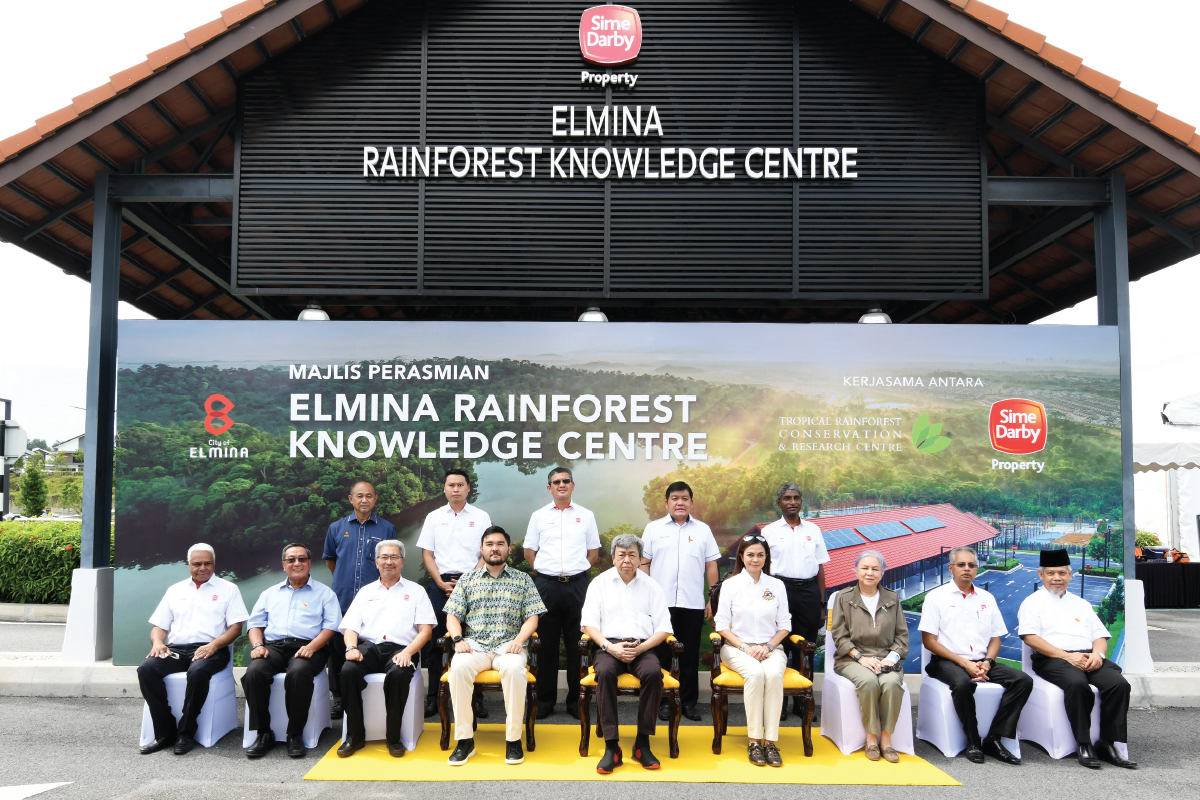
The Elmina Rainforest Knowledge Centre by Sime Darby Property, which is situated beside a 2,700-acre forest reserve in Bukit Cherakah, was established to foster forestry research, conservation, education and recreation (Photo by Mohd Izwan Mohd Nazam/The Edge)
Development plans need to take biodiversity impact into account
Biodiversity is not taken into account or is the last thing on the agenda when it comes to development plans, says Dr Mark Rayan Darmaraj, country director of the Wildlife Conservation Society Malaysia Programme.
Although it is a requirement to conduct environmental impact assessments (EIAs) for most development projects, the level and intensity of biodiversity surveys are rarely sufficient, he observes. There are also potential loopholes in the EIA system that need to be carefully monitored.
This is because lands or projects that belong to the same party are sometimes divided into smaller parcels. These are then registered by different companies to circumvent the minimum area threshold required for an EIA.
Worryingly, projects are rarely halted due to environmental or biodiversity concerns unless there is a public outcry, says Mark. Additionally, some projects are approved even though there are detrimental effects to species or habitats in the area because mitigation measures are identified. However, the impact of these mitigation measures are rarely documented over the long term.
These disruptions will lead to a cascading effect that imbalances the natural ecosystem, says Mark. For instance, mangrove habitats that act as nursery grounds for marine species and provide protection for humans against natural disasters have been lost to coastal developments and reclamation projects.
“Unstable development and overharvesting can alter the wildlife community structure and its effects on the forest and marine ecosystems are hard to predict but it is likely to be detrimental over the long run, especially since we have not fathomed the full extent of animal interactions and functions in such ecosystems,” he says.
This means Malaysia urgently needs to implement policies that prioritise biodiversity conservation. For this to work, the gap between federal commitments and state-level implementation needs to be bridged because federal systems place conservation jurisdiction at the state level.
Development plans at the state level do not need to take federal planning documents such as the Central Forest Spine Master Plan (CFSMP) into consideration, says Mark. This is because land is a state matter.
The CFSMP would require substantial state-level political backing and significant financial outlay to mitigate the effects of planned developments or to rehabilitate these areas, notes Mark.
“Habitat protection remains a complex issue as states are the ultimate decision-makers when it comes to land matters. In recent years, large-scale conversion of forest reserves have been taking place to establish timber-latex clone plantations, while rare earth mining is an upcoming threat, which needs to be monitored to make sure important wildlife habitats are not compromised. Very often it is the short-term financial gain that is prioritised over the long-term benefits and inherent value that these habitats provide,” he says.
The expansion of protected areas is critical for the long-term survival of threatened species. For instance, Pahang has announced the gazettement of Malaysia’s first tiger reserve, which spans 1,340 sq km.
The Ministry of Natural Resources and Environmental Sustainability reported that 350,000ha are now classified as protected areas.
Yet, some areas are only protected on paper and do not have the sufficient resources, financial allocations and management interventions to ensure that these parks can be managed over the long term, says Mark.
“It is not enough to just declare a handful of areas as protected areas. There is a need to see how non-protected areas can form part of a larger area that can be managed by indigenous or local communities to support conservation goals.”
Save by subscribing to us for
your print and/or
digital copy.


